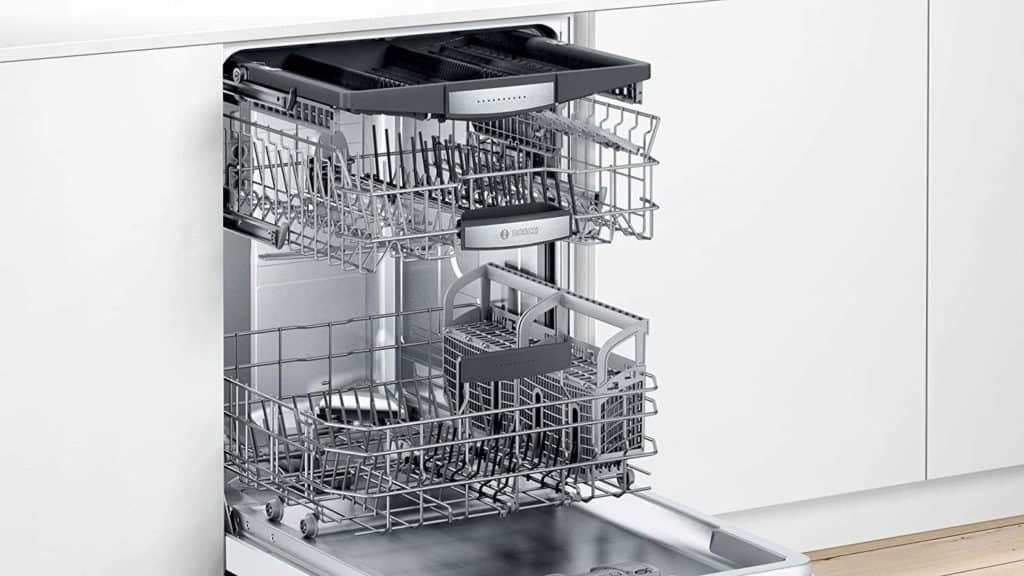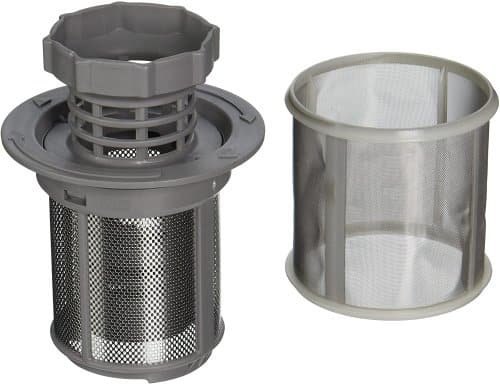A moldy smell in your dishwasher can be a persistent and unpleasant issue. Ensuring your dishwasher remains clean and odor-free is essential for maintaining a healthy kitchen environment.
In this comprehensive guide, we will delve into the causes of moldy odors, provide step-by-step cleaning instructions, and offer preventive measures to keep your dishwasher smelling fresh.

Table of Contents
Dishwasher Smells Moldy How to Eliminate and Prevent?
If your dishwasher smells moldy, there are a few common causes and solutions you can try to eliminate the odor. One possible reason for the smell is food particles or debris trapped in the filter or drain of the dishwasher.
Make sure to clean out these areas regularly to prevent mold and bacteria from growing. Another cause could be a build-up of soap scum or mineral deposits in the dishwasher. Running a cycle with white vinegar or a dishwasher cleaner can help remove these residues and freshen up the appliance.
Additionally, check the door seal of the dishwasher for any signs of mold or mildew growth. Wiping down the seal with a mixture of water and vinegar can help kill any existing mold spores and prevent further growth.
It’s also important to allow the dishwasher to dry completely after each use by leaving the door slightly ajar, as moisture can contribute to mold and mildew development.
By addressing these potential issues and implementing regular maintenance, you should be able to get rid of that moldy smell in your dishwasher.
Understanding the Causes of Moldy Smells
Residual Food Particles
One of the primary reasons for moldy smells in dishwashers is the accumulation of residual food particles. These particles can get trapped in various parts of the dishwasher, including the filter, spray arms, and door seals, leading to mold and bacteria growth.
Standing Water
Standing water in the bottom of the dishwasher can create a breeding ground for mold and mildew. This can occur if there is a blockage in the drainage system or if the dishwasher is not used frequently enough, allowing water to stagnate.
High Humidity Levels
High humidity levels inside the dishwasher can also contribute to mold growth. Dishwashers are designed to be airtight, which means any moisture inside has limited means of escape, fostering an environment conducive to mold and mildew.
Step-by-Step Cleaning Process
1. Remove and Clean the Filter
The filter is a common area where food particles can accumulate. Follow these steps to clean it effectively:
- Locate the Filter: Typically found at the bottom of the dishwasher, the filter can be easily removed by unscrewing or lifting it out.
- Rinse the Filter: Use warm, soapy water to rinse off any debris. A soft brush can help remove stubborn particles.
- Inspect and Clean the Surrounding Area: Ensure there is no debris left in the filter housing.

2. Clean the Spray Arms
The spray arms are responsible for distributing water throughout the dishwasher. To clean them:
- Remove the Spray Arms: Check your dishwasher’s manual for instructions on how to detach the spray arms.
- Unclog the Nozzles: Use a toothpick or a small brush to clear any debris from the spray nozzles.
- Rinse Thoroughly: Run the spray arms under warm water to ensure all blockages are removed.

3. Wipe Down the Door Seals
Door seals can harbor mold and mildew due to their rubbery texture and the moisture they are exposed to. Follow these steps to clean them:
- Inspect the Seals: Look for any visible mold or debris.
- Clean with Vinegar: Use a cloth soaked in white vinegar to wipe down the seals. Vinegar is effective at killing mold and mildew.
- Dry Thoroughly: Ensure the seals are completely dry to prevent further mold growth.
4. Run a Cleaning Cycle
Running a cleaning cycle with the dishwasher empty can help remove lingering odors and sanitize the interior:
- Use Vinegar: Place a cup of white vinegar in a dishwasher-safe container on the top rack. Run a hot water cycle to help break down any remaining mold or mildew.
- Follow with Baking Soda: After the vinegar cycle, sprinkle a cup of baking soda on the bottom of the dishwasher and run a short hot water cycle. Baking soda will help neutralize any remaining odors.
Preventive Measures to Avoid Moldy Smells
Regular Maintenance
Performing regular maintenance is key to preventing moldy smells. This includes cleaning the filter, spray arms, and door seals every few months, depending on usage.
Proper Loading Techniques
Ensure you are using proper loading techniques to avoid blocking the spray arms and ensure optimal water circulation. Avoid overcrowding the dishwasher, as this can prevent thorough cleaning and drying.
Run the Dishwasher Frequently
Running the dishwasher frequently helps prevent standing water and reduces the chances of mold growth. If you do not have enough dishes for a full load, consider using a rinse cycle to keep the interior moist and fresh.
Leave the Door Open
After a wash cycle, leave the door open slightly to allow moisture to escape. This simple step can significantly reduce humidity levels inside the dishwasher, preventing mold and mildew formation.
Use a Dishwasher Cleaner
Using a dishwasher cleaner once a month can help maintain a clean and fresh-smelling appliance. These cleaners are designed to remove build-up and sanitize the interior.
Conclusion
Addressing and preventing a moldy smell in your dishwasher requires a combination of regular cleaning and smart maintenance practices. By following the steps outlined in this guide, you can ensure your dishwasher remains clean, efficient, and odor-free.
